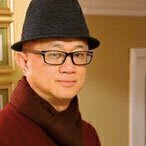To Thy Selfies Be True
/Welcome to the world of 2D cafés in the Philippines, the latest trend in food and beverage hangout places — from Manila and Quezon City to Makati, from Baguio to Bacolod. They’re being promoted as “Instagrammable,” meaning they’re the perfect setting for selfies and photos that you can post on your Instagram account.
You can go dressed in black and white, or you can wear something in color, to contrast with the background. Either way, your Instagram friends will think your photos were edited, or colorized.
Kurimi Milk Tea Bar was the first 2D cafe in the Philippines. Inspired by the famous Greem Cafe in South Korea, it features a 2D theme, with its white interior outlined in black paint to mimic a cartoon. Chairs, tables, and even the refrigerator are painted over to provide the ultimate 2D experience.
Collage of interior of Kurimi Milk Tea Bar (courtesy of Kurimi Milk Tea Bar)
Kurimi Milk Tea Bar's Tomas Morato location in Quezon City is its first stand-alone shop. Its 2D illusion was created by Ralph Pangilinan. You'll find details like a drawn-on bookshelf, Mount Fuji, and even a cow peeking in from a window.
More than its distinctive appearance, Kurimi offers a wide variety of milk-tea drinks made with Taiwan-sourced tea that's brewed fresh every day.
The tea bar has branched out to various locations like in Maginhawa Street in Quezon City, Tagaytay City and as far down south as Talisay City, Cebu and Zamboanga City in Mindanao. It continues to offer franchises to interested parties across the country.
Inspiration
Kurimi’s inspiration, Greem Café, is a coffee shop in Seoul, South Korea. It is a takeoff from a similar establishment in the hit Korean animated Web series, “W: Two Worlds Apart.” It is a hit among locals and tourists for its unique, two-dimensional look that appears almost as if it was lifted out of a sketchbook.
Upon entering Greem Café, patrons find themselves transported into a two-dimensional world. Inside the narrow café, walls, counters, furniture, and even forks and knives are crafted to look like two-dimensional drawings come to life. Dark outlines on every object and matte white surfaces create an effect that resembles a room ripped from a cartoonist’s notebook. The flat-line aesthetic pervades every aspect of the space from chairs to cutlery, compressing the room into a two-dimensional plane, and giving the impression that the space is made only of lots and lots of paper and ink.
Interior of Greem Cafe in Seoul, South Kore (courtesy of Greem Cafe)
The shop’s name, Greem, comes from a Korean word which can mean a cartoon or a painting.
2D Café in Baguio
The summer capital of the Philippines has its own versions of 2D cafés, one of them taking inspiration from Japanese Animator Hayao Miyazaki.
Cabsat Café (Ilocano for sibling), goes beyond milk tea, and offers beverages, pastries, and budget meals. It began operations in June this year, as a new venture for two Overseas Filipino Workers (OFWs), both nurses.
Collage of interior of Cabsat Cafe in Baguio (with author) (Photos by Rene Astudillo)
One of the partners, Seychelle Udan, who manages the shop, decided to quit overseas employment and establish the small business, located very close to Baguio’s largest university, Saint Louis University.
Seychelle Udan, owner/manager of Cabsat Cafe (Photo by Rene Astudillo)
Udan painted and decorated the place herself, with help from another friend. She was quick to point out that part of the painting included images of turtles, to honor her longtime pet turtles that are now gone.
Like most small businesses, Udan admits they were hit hard by the Covid-19 pandemic which affected the flow of customers due to the community quarantine restrictions. But she says they have managed to survive, slowly developing regular clientele in addition to walk-in customers curious about the 2D concept. She hopes that when face-to-face classes eventually return, business will significantly pick up, especially among students of the nearby university.
Rene Astudillo is a writer, book author and blogger and has recently retired from more than two decades of nonprofit community work in the Bay Area. He spends his time between California and the Philippines.
More articles from Rene Astudillo







